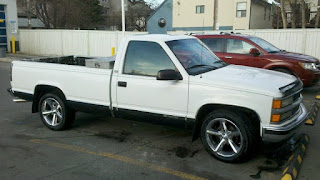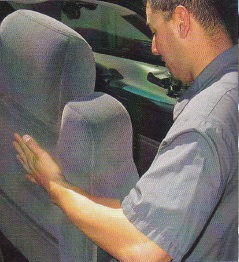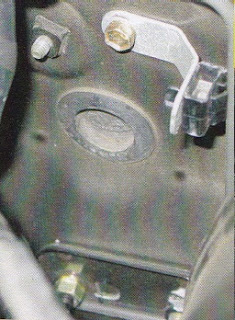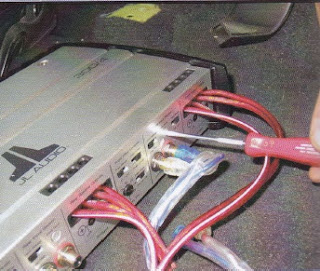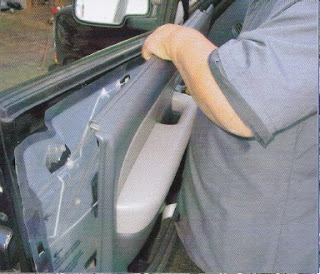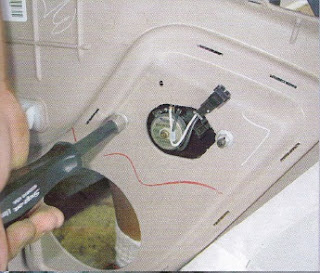Those of you that read this blog have probably figure out that I don't buy new vehicles. I buy used and spend far less working on them myself. Ya..you guessed it,here's another 96 Chevy story cause the truck went up on blocks again. Its been a long time coming and I figured once my daughter's Firebird sold I would get to the truck. Well the car's gone and I finally got the chance to get under the truck and have a look.
In the back of my mind,I've always wanted to black out the grill and change the appearance of the front of the truck. The of course I decided I want to pretty much change the appearance of the whole truck. Prioritizing though leaves me at,stopping the rust and repairing the other little things first and foremost. I've noticed small rust spots starting all over the truck and after any mechanical issues those will be my priority. And,as any gear head knows,once you bust one or two things open you'll always find something else you want to change or modify. That being said, I know I'm off on another adventure.
Now, when you're stripping the front grill be careful. This Chevy has 450,000 clicks on it so some parts are gonna be a little worn. This reflector lense was already repaired before I bought the truck 10 years ago. The plastic studs break fairly easy so maybe hit them with a shot of lube or WD-40 before taking them apart.
You can always buy a good stripped to remove the flaking chrome finish. I decided that I wanted to spend an hour or so with a gas powered pressure washer that kicks out about 2600 p.s.i. Cleaned'er up right nicely.
The grill turned out pretty good in spite of a few blemishes. I didn't bother to fill any of them simply because this was just a quick fix job. This truck is due for a full ground up rebuild soon so I just wanted to change the look a bit for the summer.
This is a picture I took a couple years back after a trip to the car wash.
Up on Blocks
Well, so far the truck has over 450,000 klicks one it (297000 miles). The interior looks pretty good and for the most part the truck's body seams ok, from a distance. I've been grinding out small rust patches here and there and just spraying Rock Guard over it the keep the look. And that's worked very well. I jack it up,put it on up on blocks and have a look underneath to find the pan gasket leaks all the way around, the power steering pressure line leaks when it connects to the steering box, the passenger side header leaks and a whole assortment of other minor issues. So, I decide to make a list of things that need to be done and a few that I've wanted to do for a while. So inside of about 30 minutes, my list was compiled and I started pulling the grill and lower air damn,signal light lenses and so forth.In the back of my mind,I've always wanted to black out the grill and change the appearance of the front of the truck. The of course I decided I want to pretty much change the appearance of the whole truck. Prioritizing though leaves me at,stopping the rust and repairing the other little things first and foremost. I've noticed small rust spots starting all over the truck and after any mechanical issues those will be my priority. And,as any gear head knows,once you bust one or two things open you'll always find something else you want to change or modify. That being said, I know I'm off on another adventure.
The Front Grill
As you can see,the front grill has a few miles on it. Years of winter driving,gravel roads and car washes have taken their toll. You can't see from the picture but, there is a few small cracks on the plastic joints that are easy enough to fix with some glue.
Now, when you're stripping the front grill be careful. This Chevy has 450,000 clicks on it so some parts are gonna be a little worn. This reflector lense was already repaired before I bought the truck 10 years ago. The plastic studs break fairly easy so maybe hit them with a shot of lube or WD-40 before taking them apart.
You can always buy a good stripped to remove the flaking chrome finish. I decided that I wanted to spend an hour or so with a gas powered pressure washer that kicks out about 2600 p.s.i. Cleaned'er up right nicely.
The grill turned out pretty good in spite of a few blemishes. I didn't bother to fill any of them simply because this was just a quick fix job. This truck is due for a full ground up rebuild soon so I just wanted to change the look a bit for the summer.

